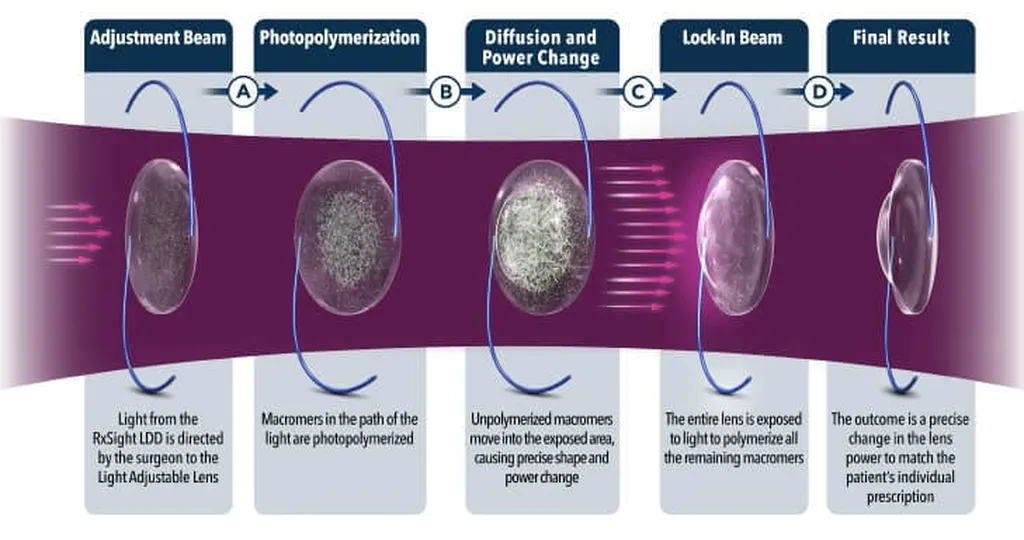In a groundbreaking development poised to revolutionize cataract surgery outcomes, researchers have introduced a novel supramolecular drug-eluting intraocular lens (IOL) designed to prevent posterior capsular opacification (PCO), a common complication following cataract surgery. This innovative approach, detailed in a recent study published in *Materials & Design* (translated as “Materials and Design” in English), leverages the reversible host-guest interaction between adamantane and β-cyclodextrin to deliver drugs sustainably and effectively.
The research, led by Yuexin Yang from the National Engineering Research Center of Ophthalmology and Optometry at Wenzhou Medical University in China, addresses a critical gap in current IOL technology. Traditional methods of drug loading, such as physical absorption or chemical grafting, often struggle with controlling drug release rates and maintaining simplicity in processing. Yang’s team overcame these challenges by synthesizing an adamantane-modified copolymer (PEEA) and conjugating doxorubicin (DOX) to β-cyclodextrin (β-CD-DOX) to serve as the drug guest. The PEEA IOL was then efficiently loaded with β-CD-DOX through a straightforward soaking process.
“The beauty of this supramolecular approach lies in its simplicity and effectiveness,” said Yang. “By utilizing the natural affinity between adamantane and β-cyclodextrin, we can achieve controlled drug release without complex chemical modifications.”
The study confirmed the successful synthesis of the materials through comprehensive characterization techniques, including 1HNMR and FTIR. The resulting IOL exhibited excellent properties, such as high light transmittance (>84%), a suitable refractive index (∼1.535), a low elastic modulus (0.2–0.3 MPa), and good biocompatibility. In vitro tests demonstrated that the PEEA-DOX system sustainably released DOX and effectively inhibited the growth of lens epithelial cells (LECs), which are responsible for PCO.
In a rabbit model, the PEEA-DOX-IOL significantly suppressed PCO development over 28 days compared to commercial IOLs, with no evident toxicity to surrounding ocular tissues. This breakthrough presents a versatile and effective supramolecular strategy for advanced ocular drug delivery, potentially shaping the future of cataract surgery and post-operative care.
The implications of this research extend beyond the immediate medical benefits. The supramolecular approach could inspire similar innovations in other medical fields, particularly where controlled drug delivery is crucial. For the energy sector, the principles of host-guest interactions and supramolecular chemistry could lead to advancements in materials science, such as the development of more efficient and sustainable energy storage solutions.
As Yuexin Yang and her team continue to refine this technology, the potential for widespread adoption in clinical settings becomes increasingly promising. This research not only highlights the importance of interdisciplinary collaboration but also underscores the transformative power of supramolecular chemistry in addressing complex medical challenges. With further development, this innovative IOL could become a standard in cataract surgery, significantly improving patient outcomes and reducing the need for additional interventions.
In the broader context, the study published in *Materials & Design* serves as a testament to the ongoing advancements in biomedical engineering and materials science. As researchers continue to push the boundaries of what is possible, the future of medical technology looks brighter than ever.

